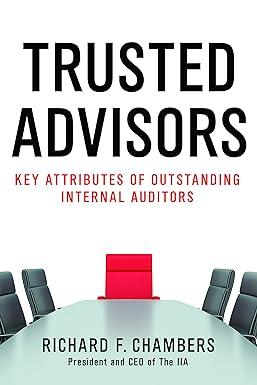Question
Manitowoc Crane (B). Manitowoc Crane (U.S.) exports heavy crane equipment to several Chinese dock facilities. Sales are currently 14,000 units per year at the yuan
Manitowoc Crane (B).Manitowoc Crane (U.S.) exports heavy crane equipment to several Chinese dock facilities. Sales are currently 14,000 units per year at the yuan equivalent of $25,000
each. The Chinese yuan (renminbi) has been trading at Yuan7.80/$,
but a Hong Kong advisory service predicts the renminbi will drop in value next week to Yuan8.60/$,
after which it will remain unchanged for at least a decade. Accepting this forecast as given, Manitowoc Crane faces a pricing decision in the face of the impending devaluation. It may either (1) maintain the same yuan price and in effect sell for fewer dollars, in which case Chinese volume will not change; or (2) maintain the same dollar price, raise the yuan price in China to offset the devaluation, and experience a 10% drop in unit volume. Direct costs are 75% of the U.S. sales price.
Additionally, financial management believes that if it maintains the same yuan sales price, volume will increase at 10% per annum through year eight. Dollar costs will not change. At the end of 8 years, Manitowoc's patent expires and it will no longer export to China. After the yuan is devalued to Yuan8.60/$, no further devaluations are expected. If Manitowoc Crane raises the yuan price so as to maintain its dollar price, volume will increase at only 11% per annum through year eight, starting from the lower initial base of 12,600 units. Again, dollar costs will not change, and at the end of eight years Manitowoc Crane will stop exporting to China. Manitowoc's weighted average cost of capital is
15%.
Given these considerations, what should be Manitowoc's pricing policy?
CASE 2
If Manitowoc Crane maintains the same dollar price, raises the yuan price in China to offset the devaluation, and experiences a 10% drop in unit volume, the annual sales price per unit is
$25,000.
The direct cost per unit is 75% of the sales, or $25,000times0.75=$18,750 and the sales volume in year 1 is 14,000times(1minus0.10)=12,600.
Calculate the growth profits for years 1 through 4 in the following table:(Round to the nearest dollar.)
| Case 2 | Year 1 | Year 2 | Year 3 | Year 4 |
| Sales volume (units) | 12,600 |
|
|
|
| Sales price per unit | $25,000 | $25,000 | $25,000 | $25,000 |
| Total sales revenue |
|
|
|
|
| Direct cost per unit | $18,750 | $18,750 | $18,750 | $18,750 |
| Total direct costs |
|
|
|
|
| Gross profits |
|
|
|
|
Calculate the growth profits for years 5 through 8 in the following table:(Round to the nearest dollar.)
| Case 2 | Year 5 | Year 6 | Year 7 | Year 8 |
| Sales volume (units) |
|
|
|
|
| Sales price per unit | $25,000 | $25,000 | $25,000 | 25,000 |
| Total sales revenue |
|
|
|
|
| Direct cost per unit | $18,750 | $18,750 | $18,750 | $18,750 |
| Total direct costs |
|
|
|
|
| Gross profits |
|
|
|
|
If Manitowoc's weighted average cost of capital is
15%,
what is the cumulative present value of the firm's gross margin?
$
(Round to the nearest dollar.)
Step by Step Solution
There are 3 Steps involved in it
Step: 1

Get Instant Access to Expert-Tailored Solutions
See step-by-step solutions with expert insights and AI powered tools for academic success
Step: 2

Step: 3

Ace Your Homework with AI
Get the answers you need in no time with our AI-driven, step-by-step assistance
Get Started


